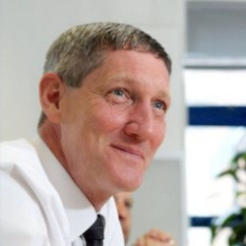Terrence Higgins Trust paid its departing chief executive and deputy chief executive a total of at least £350,000 last year, including redundancy payments, its latest report and accounts suggest.
The sexual health and HIV charity bade farewell to its chief executive Sir Nick Partridge and deputy CEO Paul Ward last year. Partridge had been with the Trust for almost 30 years and its chief executive for 22; Ward had been employed there for 17 years.
In the summer of 2013 THT decided to combine the roles of chief executive and deputy chief executive to reduce operating costs, and advertised for a new leader. Dr Rosemary Gillespie joined in April 2014 as chief executive.
The accounts for the year ending 31 March 2014 show that in 2013 no employee earned more than £90,000. Three employees earned between £80,000 and £90,000, while two earned £70,000 to £80,000, making a total of five staff paid over £60,000.
In 2014 only three were paid over £60,000, but the highest-paid of these earned £210,000 to £220,000 and another was paid £140,000 to £150,000. The third earned £60,000 to £70,000. On this, the report states only that “major restructuring across senior roles during 2013/14 has given rise to exceptional in-year costs”.
Asked to explain further, a THT spokesman said: “These figures were an isolated spike relating to the 2013/14 financial year, a period which saw several departures at the top of the charity as part of changes that reduced day-to-day running costs.
"We can’t comment on individual contractual entitlements of employees.
"Currently no member of our staff earns more than £100,000 a year."
The number of full-time equivalent staff fell from 307 in 2013 to 289 in 2014.
Record fundraising income
Fundraisers at the charity raised a record £6m last financial year, enabling it to sustain existing local authority or primary care trust services affected by statutory funding cuts. It cost the Trust £1.6m to raise these funds.
In its last year under the leadership of Sir Nick, THT recorded total income of £19.6m, down 3 per cent on 2013’s £20.1m. A small surplus was achieved.
The fall was driven partly by lower levels of statutory income, which was down almost 10 per cent to £12.4m. Especially hard hit was funding for services helping people to live with HIV, which dropped by almost 24 per cent.
But the improved fundraising success, which saw voluntary income rise by 18 per cent to just over £6m, enabled the Trust to offer continuity of services to beneficiaries.
Spending also fell slightly in line with the income drop, but the charity managed to keep expenditure on long-term condition management to within 4 per cent of the previous year despite the 24 per cent fall in statutory funding for these services.
Support costs totalled £1.9m, a contraction of 27 per cent compared with 2013. Although the charity operates across the UK, central services including finance, HR, IT and estates are all located at head office in London to achieve economies of scale.
During the year it spearheaded new approaches to HIV testing, specifically a free postal testing service and a national HIV Testing Week. It also delivered ‘It starts with me’, England’s largest HIV prevention campaign.
It sustained its THT Direct helpline even though all government funding for this was cut in 2012, and more than 17,000 people used this service. It also grew membership of the myHIV website and gave poverty advice and hardship grants to more people than ever before.
Following successful campaigning, the ban on HIV home testing was lifted, and the Trust had its highest-ever media profile during the year with 2.965 mentions across all media.
This year, spending is budgeted at £19.2m, giving an expected reserve level of £5.8m. Actual unrestricted reserves at 31 March 2014 were £6.8m, equivalent to around four months operating expenditure, which is within THT’s reserves policy.
The make-up of statutory funding for the Trust’s services changed dramatically over the year. PCTs and health boards slashed their contributions to clinical, health improvement and long-term condition management services from £9.2m to £1.1m, but funding for these services from local authorities and other statutory bodies increased from £2m to £8.8m.









